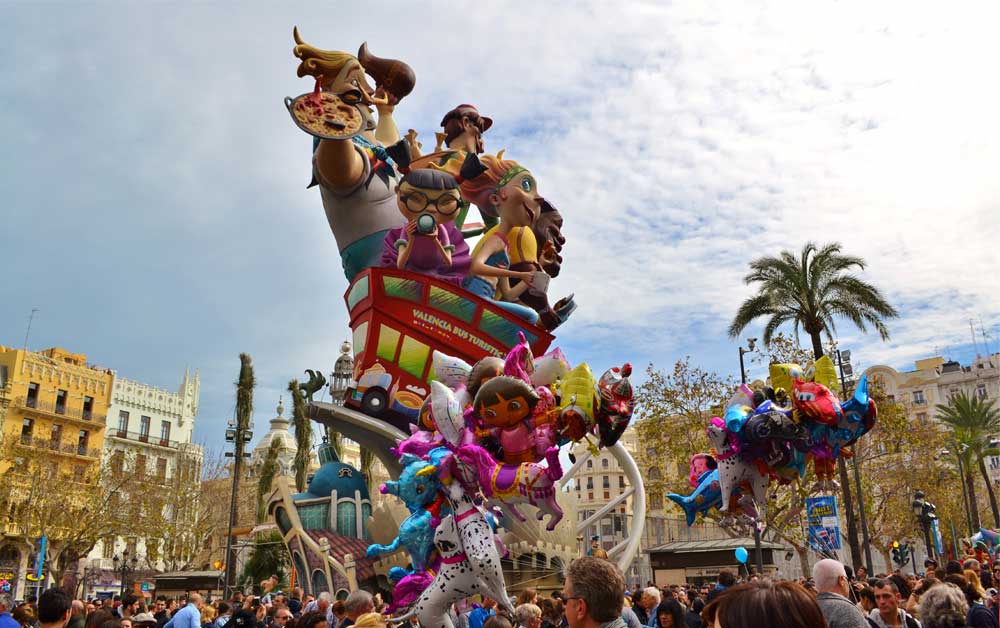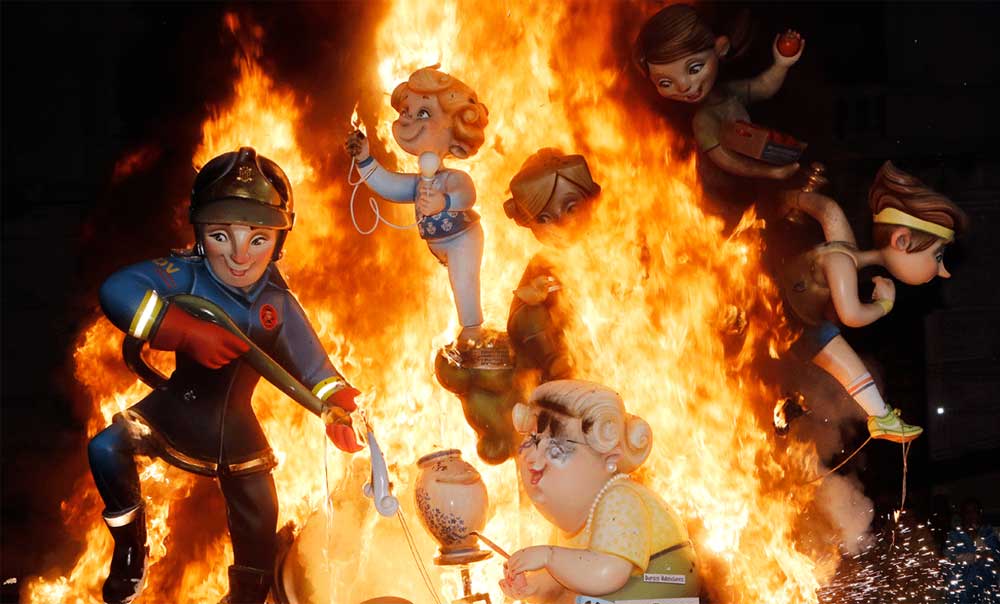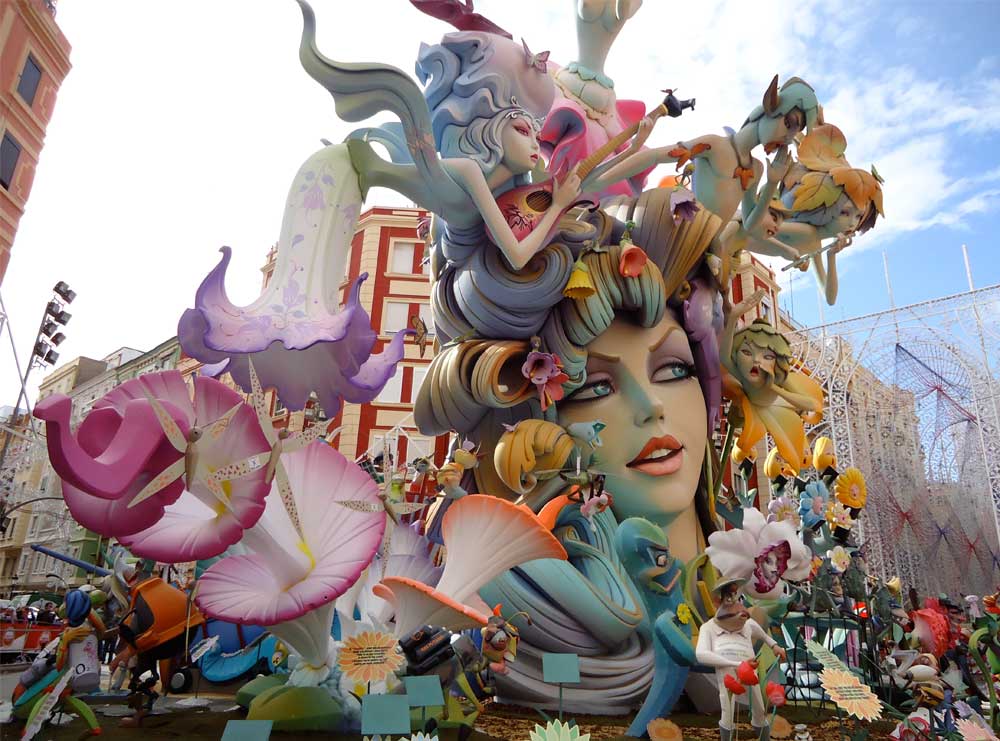News of Fallas Fiesta
Time left to the end of event
Available services for Fallas Fiesta
Fallas Fiesta travel services
Video clips of Fallas Fiesta
More Information about Fallas Fiesta
- More Less
Why Fallas Fiesta 2020?
Lights, gunpowder, monuments, flowers, traditional costumes, music, satire, emotions and a great deal of fun are the ingredients of a unique cocktail known as the Fallas Fiestas.
This is definitely a bucket list festival. The excitement and fear of watching 400 spectacular sculptures going up in flames in a beautiful coastal city may remind you of another Spanish festival: the Running of the Bulls. But this visual feast won’t have you running in the streets. It will have you grabbing your camera. It’s one of the most photogenic festivals in the world.


Fiery Evolution of Las Fallas:
Lighting fires has long been a way to kick off the start of spring. Long before lightbulbs, Valencian carpenters and artisans plied their trades under candlelight, using pieces of wood called parots as wick holders. Come spring, when sunlight replaced candlelight, the parots were burned. The pagan ritual merged with the church's commemoration of Saint Joseph, the patron saint of the carpenters, and thus Las Fallas was born.
As time passed, traditions evolved. The parots took on human forms. Today, the effigies are dressed up in costumes: the larger ones are called fallas, the smaller, doll-like ones, ninot. Over time, the ninots grew in both size and detail, as did the cartoonish fallas, which typically depict satirical scenes and current events. Polystyrene replaced the fallas’ papier mâché-covered wooden frames, allowing them structures of up to 30 meters (100 feet). During the grand finale, all works end up in a blaze, except for one to be preserved in the Museo Fallero as a symbol of prosperity.


The Ear-Splitting Scene:
Don’t be surprised if you don’t get much sleep during Las Fallas. Your daily alarm clock is any one of a number of marching brass bands whose sole purpose is to make sure that you don’t over-doze. Expect your wake up call to start at around 8am.

 For further information, please click here .
For further information, please click here . Venue of Fallas Fiesta
Weather Forecast of Fallas Fiesta
Comment
You can also enter your comment about this event
Event rate of 6 vote
Fallas Fiesta will be held 15 Mar to 07 Apr 2021 in Valencia, Spain. Fallas Fiesta which takes place in Valencia in March every year is undoubtedly one of those ‘super-festivals’ attracting many foreign visitors as well as Spanish tourists from all over the country. The Las Fallas celebration dates back to the Middle Ages when excess winter supplies were torched in an equivalent to a spring cleaning. Today’s rendition takes a more grandiose approach, paying homage to Spain’s history and culture with spectacular displays of pyrotechnics. The streets fill up with joy and the hustle and bustle of the Fallas festival, the upmost expression of the merger of tradition, satire, art and sentimentality for one's homeland. The Valencian people live their most international fiesta to the maximum and their kind and natural character invites you to visit the city and join in this fiesta, where everything that is bad is burnt and reborn from the ashes to welcome a new season. Fallas Fiesta is an event and I like events...




